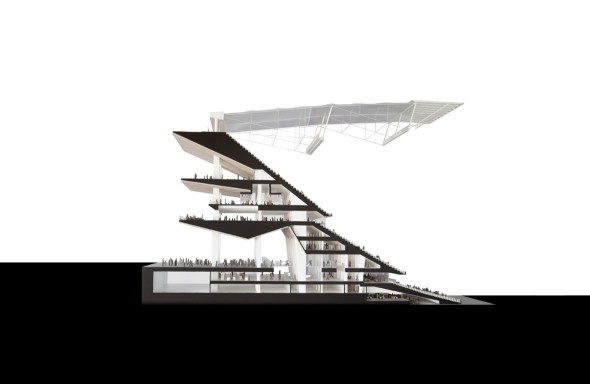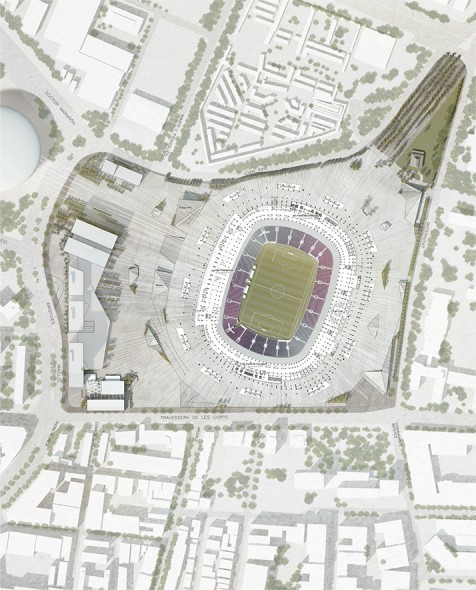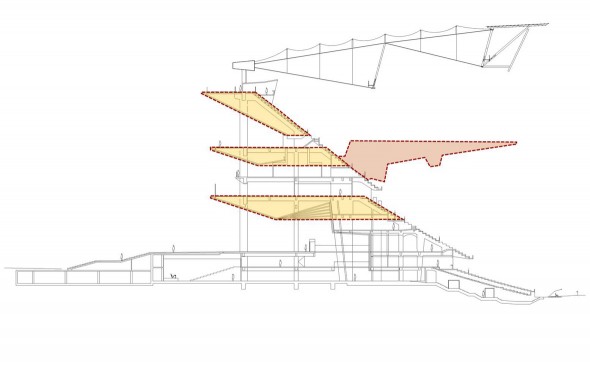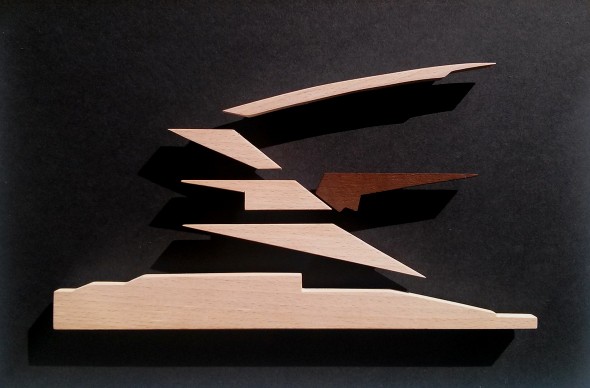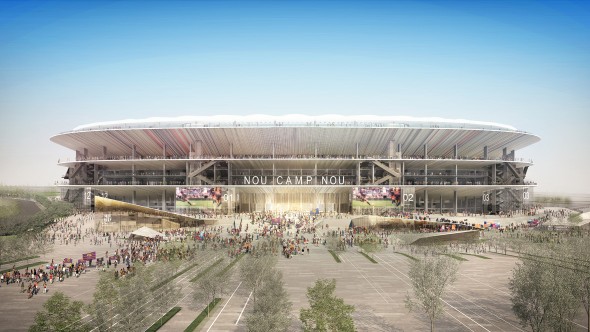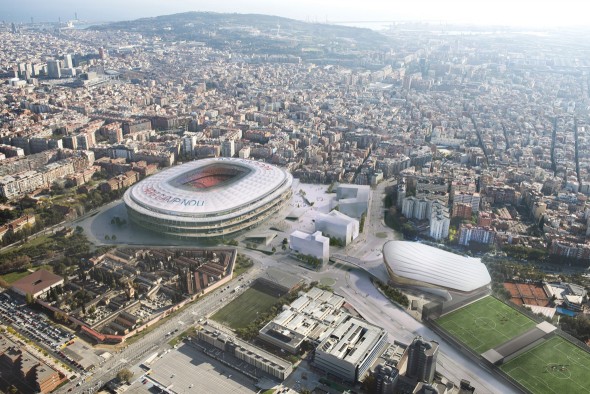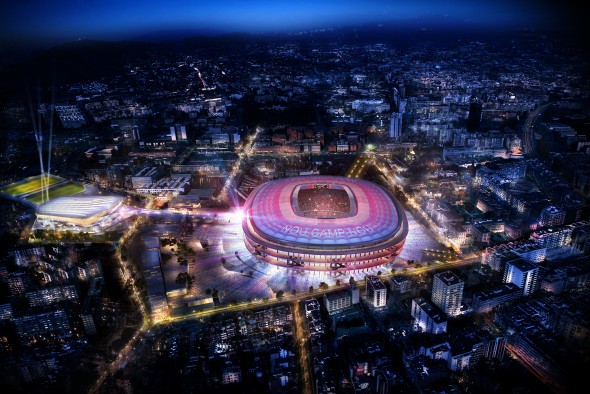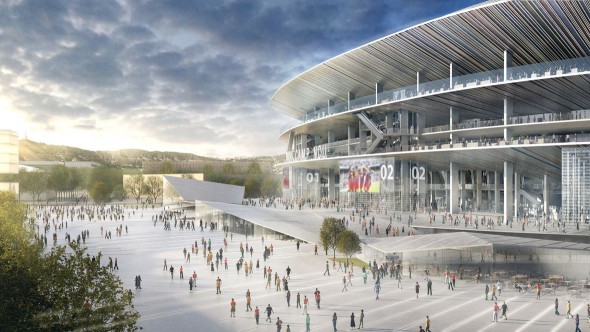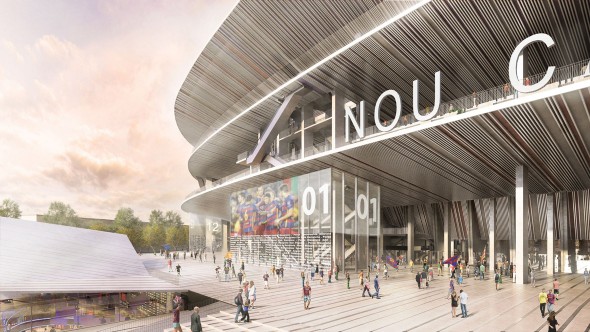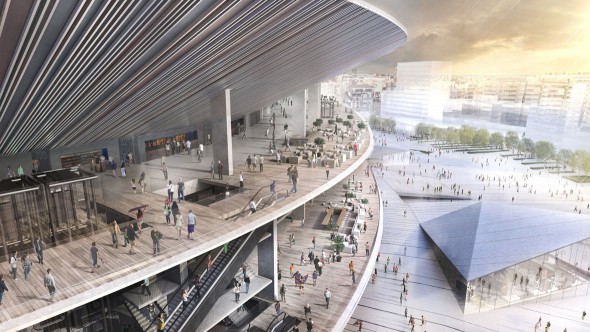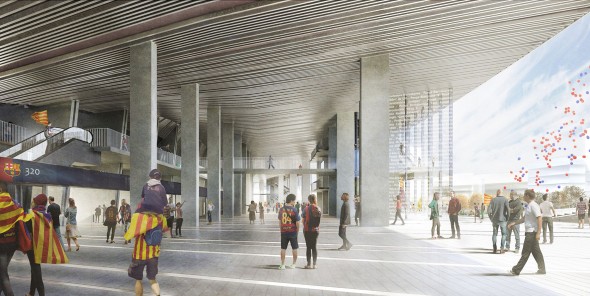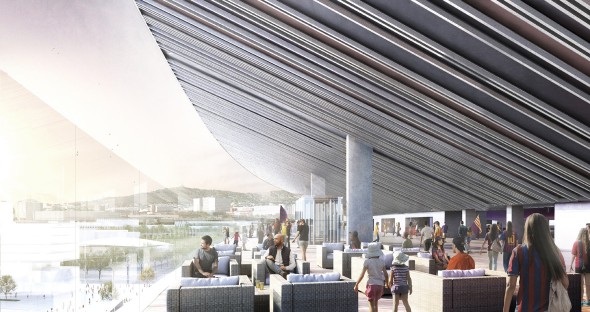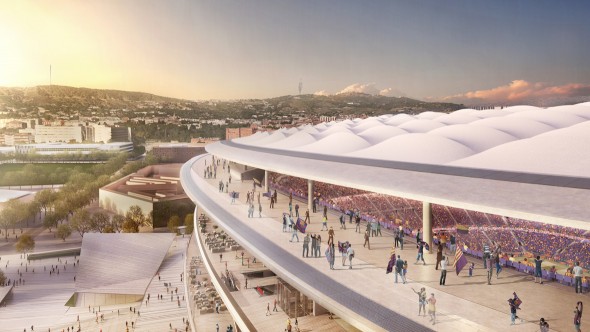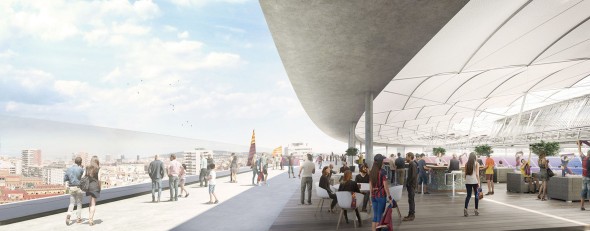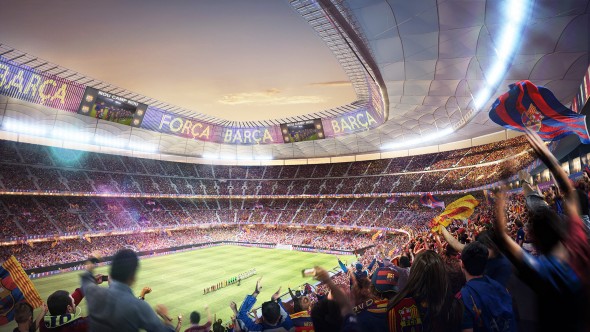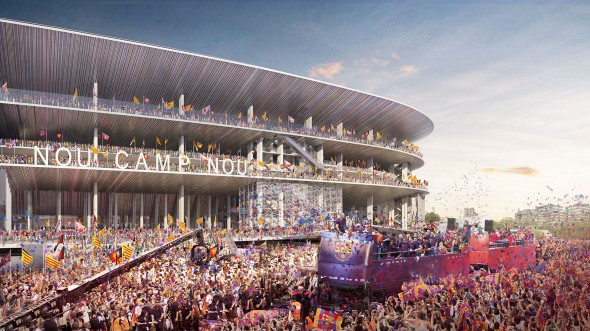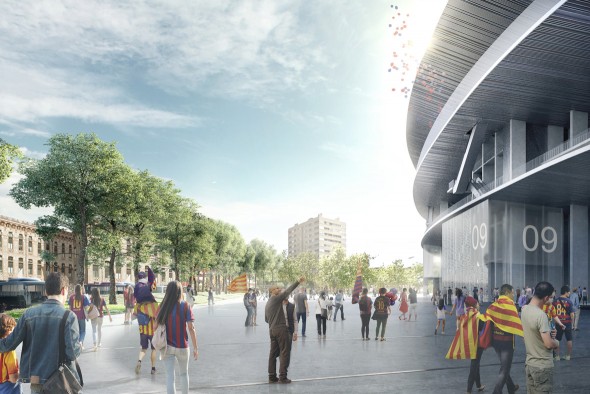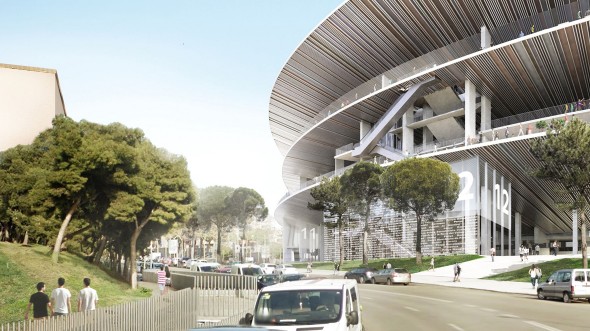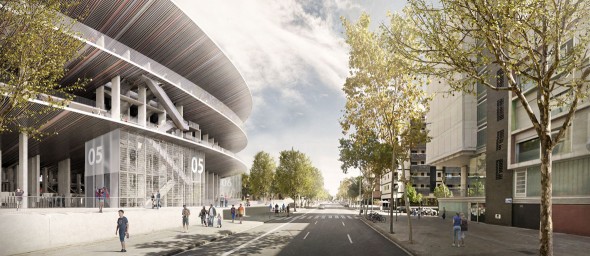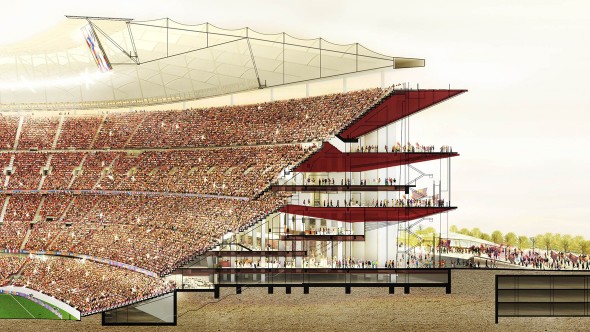Nou Camp Nou: Joan Pascual – Ramon Ausió SLP / Nikken Sekkei
| Dates | 2016 |
| Site | Camp Nou, Barcelona |
| Client | Futbol Club Barcelona |
| Architects | Joan Pascual, Ramon Ausió, Cristóbal Fernández, Esteve Puigdengolas, Eric Trillo & Nikken Sekkei |
| Technitian | Tecnics G3 |
| Imaging | Play Time, Nikken Sekkei, Pascual-Ausió Arquitectes |
FIRST PRIZE IN DESIGN COMPETITION | 2016
This Project required solving two main objectives at the same time. On the one hand, the actual renovation and extension of the stadium. On the other hand, not less an important objective, to ensure a good relationship between the surrounding urban space and the building, i.e. to ensure a perfect integration of the building in the city, solving the challenges and constraints of the existing urban context.
One of the first important decisions taken in this Project was to consider the possibility of lowering the “ameba” circulation ring planned in FCB’s reference Project from level +14m down to the existing ground/street level.
By doing so, we reduced the tensions created by the “ameba” over the adjacent streets of Joan XXIII and Treavessera de les Corts, and created instead two wide open areas both to the East and West of the site, which have become the main areas of access to the campus. As a result, the whole of Espai Barça is now a wide open space which strengthens the relationship with the people, the neighbourhood and the city.
With regards to the stadium, we found it very hard to come up with a solution that would be adequate and fair, both for the stadium as for the city. When we talk about fair, we do not refer to the moral meaning of the word, but rather to the etymological meaning: precise, exact and balanced.
Even though we had been told in many different ways – and we shared this view – that it was important to go back to the roots and continue the path of excellence set out by Mr. Mitjans in 1957, we were finding it very difficult to know how to get there.
We felt that after the construction of the third tier in 1982, and after the remodelling works carried out for the 1992 Olympic games, there was little left of the original stadium. This could open the door to believing that this was our moment and that we could intervene in the stadium without paying much attention to its origins. This means: that we could design the new stadium without taking into consideration any historical, cultural or architectural references. But we realised that this approach was leading us to a dead end, where the problem was reduced to finding a new dress for the stadium. A technological dress – elegant albeit – but responding to an ephemeral trend and soon to become obsolete, in the way that technology rapidly does.
Another option was to believe that we had to be strictly loyal to the spirit of Mr. Mitjans, Soteras and García-Barbón by using his architectural language, frequently based on a clear rhythm of strong vertical elements separated by light horizontal structures – many times in the form of louvres – as it can still be seen in some parts of the stadium.
We were only able to get out of this dilemma by doing something which from the very beginning we understood was very important: to live, look and listen to the stadium. To discover where its personality was, what made it excellent in the eyes of everybody.
And then we realised that the only element from Mitjan’s stadium which remained completely untouched was a very elegant structure, very thin, with a sharp edge, hovering over the stadium: the marquesina on Tribuna (The roof over the main stand). Its sharp edges in clear contrast with the oval shape of the bowl make it an even more clear example of the stadium’s architectural excellence. We realized that what makes Camp Nou extraordinary is inside the stadium, not outside. It is not the vertical elements on its outer skin, but what happens inside.
From this point onwards, things became easier. The project developed into finding a mechanism of replication of the original stadium, turning it inside-out like a sock, taking the interior to the exterior. This means, to use the excellence in the interior to create a system that opened the stadium to the city. A superposition of the section of the original 1957 stadium and the base design provided by FCB, highlights one of the main problems of the extension: the scale and volume of the new stadium in relation to the city. This problem is solved with the new section: now the volume has dematerialized, making the building much lighter.
Making the section of the building as a key generator for a Project is not new for architects. Plans explain a lot of things, but the truth is that the spatial quality achieved in a building can only be expressed through sections.
This is what the soci will find: instead of a closed stadium with more than 100 doors – sometimes difficult to locate – the soci will come to an open space, a big agora, a great plaza where points of access to the stadium will be clearly identified along a grand atrium under a set of concourses – elevated streets around the stadium – where the visitors will find all the services they need, such as restaurants, shops, bars, and leisure areas for the whole family to enjoy even in non-match days. This is the image that evokes FCB’s original stadium, that transforms it and projects it into the future.
